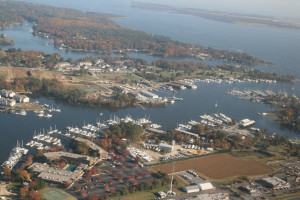Chesapeake Bay Action Plan
After decades of effort, the voluntary, collaborative approach to restoring the health and vitality of the Chesapeake Bay— the largest estuary in the United States—has not worked and, in fact, is failing.
A diverse group of 57 senior scientists and policymakers have joined forces to save the Bay. This is our plan.
Flesh-eating diseases are Chesapeake Bay’s dirty secret
By Gerald Winegrad On Aug. 5, Patty Peacock was checking crab pots on her pier on Harness Creek just as she has every summer day for decades. I have done the same at my pier just north of hers on Oyster Creek. Shaking the pot, she nicked the underside of her right arm. Bleeding, she…
Courts start to hold Big Chicken accountable, when will Maryland?
By Gerald Winegrad: To paraphrase Shakespeare: Something is rotten in the state of Maryland — and all over the Delmarva Peninsula. And it is so rotten that it is contaminating the air people breathe, the water they drink, and the region’s creeks and the bay. The rot comes from major corporations’ industrialization of chicken…
Gerald Winegrad: Global warming is real and affecting us now
Global warming is real and presents an existential threat to the Earth and its inhabitants. Human activities are the major causative factor centered on fossil fuel burning and extraction, agricultural operations, and deforestation. Sea level rise caused by global warming is accelerating. Last year tied with 2016 as the warmest year on record. The last…
Gerald Winegrad: Myths about agriculture, the biggest and least regulated Chesapeake Bay polluter
We are blessed in this country with an abundant, healthy, and cheap food supply which few civilizations in history have attained. The Green Revolution ushered in huge increases in yield per acre as massive amounts of fertilizers, especially nitrogen, were applied as well as increases in pesticides. We produce so much food and fiber, that…
Chesapeake Bay cleanup efforts have failed. Radical change is needed
Disturbing elements of CBF’s report card include an F for oyster recovery. This critical Bay keystone species has declined to 1% of historic levels inhibiting its ability to filter-cleanse Bay waters. Underwater grasses scored a D-. Along with oysters, their ecological functions make them the Bay’s Most Valuable Players, helping keep water clear and healthy by absorbing nutrients, trapping sediments, reducing erosion and acidity, adding oxygen, and providing essential habitat for crabs.
LET’S MAKE ’21 A GREEN NEW YEAR
Trumpian transgressions should be reversed: significant weakening of the Endangered Species Act; emasculation of the 102-year-old Migratory Bird Treaty Act, the bedrock law protecting birds from wanton killings including from oil spills; excluding 45 million acres of freshwater wetlands and streams from protection opening a majority of wetlands and 18% of streams to draining, development, and agricultural operations, affecting drinking water, wildlife especially waterfowl, and flood control; and weakening the 50-year-old critically important National Environmental Policy Act that requires environmental review and public input on major federal projects including highway construction.
We must save the forest to save the Chesapeake !
Written by Gerald Winegrad, The destruction of the Chesapeake Bay ecosystem began more than 400 years ago with the clearing of forests and later, the filling and draining of wetlands. About 66% of our tidal and freshwater wetlands were destroyed, including thousands of acres drained with federal and state funds to create farmland. The Eastern Shore…
Chickens and the Bay
The simple solution is avoided: Make the giant chicken corporations take care of the manure in a sound environmental fashion!
We are senior Chesapeake Bay scientists and policymakers from Maryland, Virginia and Pennsylvania who have concluded that after decades of effort, the voluntary, collaborative approach to restoring the health and vitality of the largest estuary in the United States has not worked and, in fact, is failing. Our group unanimously recommends that all states draining into the Chesapeake Bay adopt our 25 action items in their Watershed Implementation Plans (WIP) and implement them to improve the Bay’s water quality and to meet the requirements of the Clean Water Act.
Sign up for news & updates from Patuxent Riverkeeper

